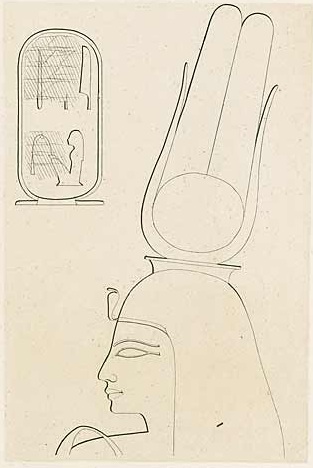
Tey was the Great Royal Wife of Kheperkheprure Ay, who was the penultimate pharaoh of Ancient Egypt's Eighteenth Dynasty. She also had been the wet nurse of Nefertiti.
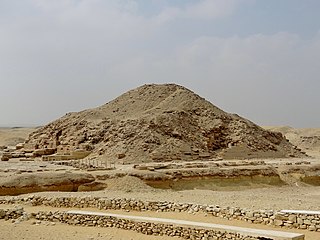
The Fifth Dynasty of ancient Egypt is often combined with Dynasties III, IV and VI under the group title the Old Kingdom. The Fifth Dynasty pharaohs reigned for approximately 150 years, from the early 25th century BC until the mid 24th century BC.

Djedhotepre Dedumose I was an Egyptian pharaoh of the Second Intermediate Period. According to egyptologists Kim Ryholt, Darrell Baker, Aidan Dodson and Dyan Hilton, he was a king of the 16th Dynasty. Alternatively, Jürgen von Beckerath, Thomas Schneider and Detlef Franke see him as a king of the 13th Dynasty.
Amenherkhepshef was an ancient Egyptian prince and a son of Ramesses VI with Queen Nubkhesbed. He lived in the mid 12th century BCE during the Twentieth Dynasty of the late New Kingdom period.
The Twenty-first, Twenty-second, and Twenty-third Dynasties ruled Egypt from the 10th century through the 8th century BC. The family tree of the Twenty-first dynasty was heavily interconnected with the family of the High Priests of Amun at Thebes. The Twenty-second dynasty and Twenty-third dynasty were also related by marriage to the family of the High Priests.

Takhat was an ancient Egyptian princess and queen of the 19th Dynasty, the mother of the usurper pharaoh Amenmesse.
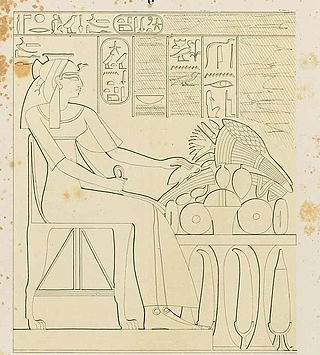
Duatentopet or Tentopet was an ancient Egyptian queen of the 20th Dynasty, the wife of Pharaoh Ramesses IV, and mother of Ramesses V. Even though the identity of Ramesses IV's wife has not been clearly stated in history, she is considered the most likely candidate by virtue of the titles she was given and which were found listed in her tomb (QV74).

Henutmire was an ancient Egyptian princess and queen. She was one of the eight Great Royal Wives of Pharaoh Ramesses II of the 19th Dynasty of Egypt.

Satiah was an ancient Egyptian queen, the first Great Royal Wife of Pharaoh Thutmose III.

Nebtu was an ancient Egyptian, the wife of Thutmose III.
Mutnofret, also rendered as Mutneferet or Mutnefert, was a queen during the Eighteenth Dynasty of Egypt. She was a secondary wife of Thutmose I and the mother of his successor Thutmose II; Thutmose I's chief wife, however, was his sister Queen Ahmose, the mother of Hatshepsut.

Tiaa or Tia'a was an ancient Egyptian queen consort during the Eighteenth Dynasty of Egypt. She was a "faceless concubine" during the time of Amenhotep II who withheld from her the title Great Royal Wife, but when her son Thutmose IV became pharaoh, he performed a revision of her status and gave her that title.
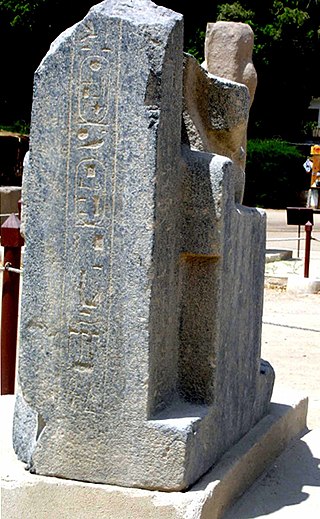
Pedubast II was a pharaoh of Ancient Egypt associated with the 22nd or more likely the 23rd Dynasty. Not mentioned in all King lists, he is mentioned as a possible son and successor to Shoshenq V by Aidan Dodson and Dyan Hilton in their 2004 book The Complete Royal Families of Ancient Egypt. They date his reign at about 743–733 BC, between Shoshenq V and Osorkon IV.

Hetephernebti was a queen of the Third Dynasty of the Old Kingdom of ancient Egypt. She was the only known wife of Pharaoh Djoser.
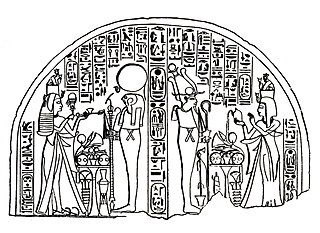
Nubkhesbed was an ancient Egyptian queen of the 20th Dynasty. She was the Great Royal Wife of Pharaoh Ramesses VI and mother of Pharaoh Ramesses VII, Princess Iset and Princes Amenherkhepshef and Panebenkemyt.
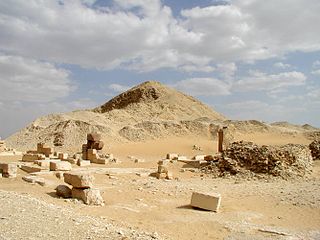
Ankhesenpepi IV was an ancient Egyptian queen, a wife of Pharaoh Pepi II of the Sixth Dynasty. She was the mother of a crown prince Neferkare. Pepi II also had several other wives.

Isetnofret was a royal woman of Ancient Egypt and, as the Great Royal Wife of Pharaoh Merenptah, she became Isetnofret II.
Aidan Mark Dodson is an English Egyptologist and historian. He has been honorary professor of Egyptology at the University of Bristol since 1 August 2018.
This page is based on this
Wikipedia article Text is available under the
CC BY-SA 4.0 license; additional terms may apply.
Images, videos and audio are available under their respective licenses.












